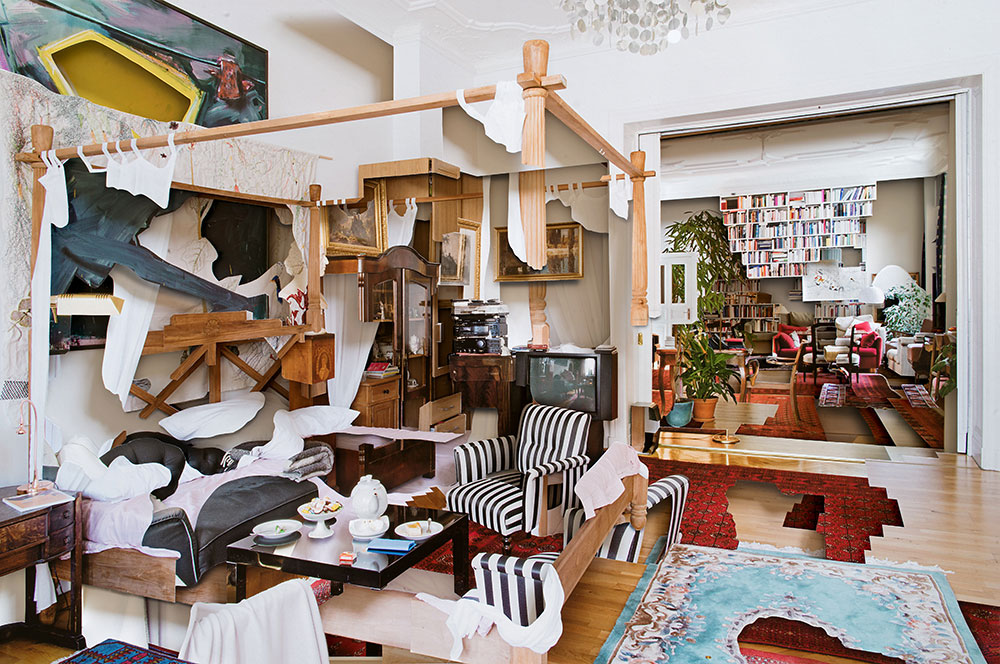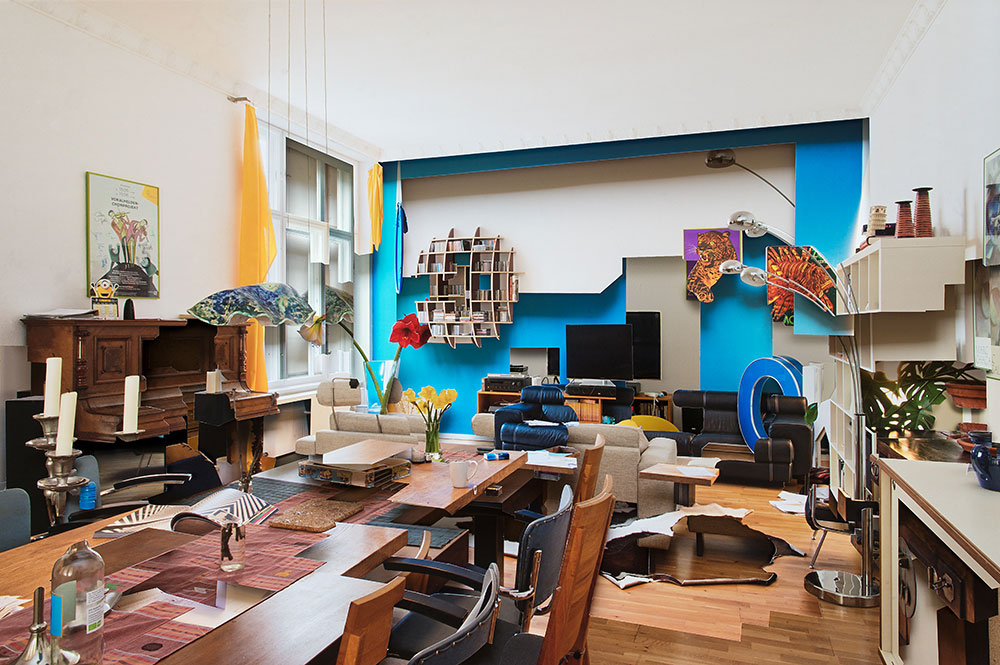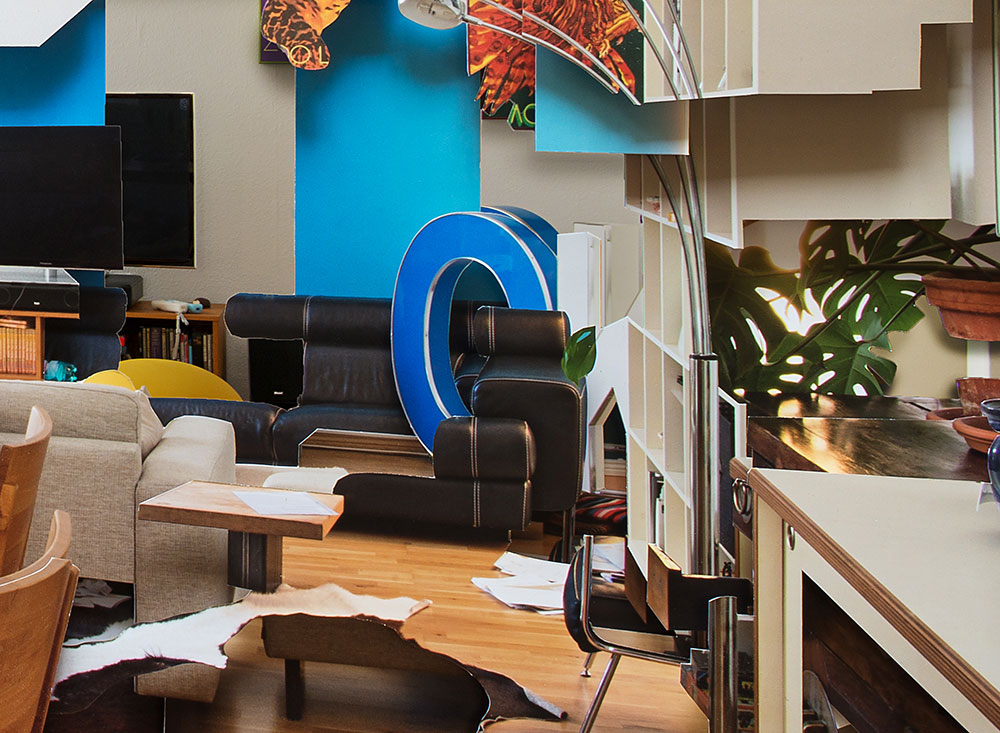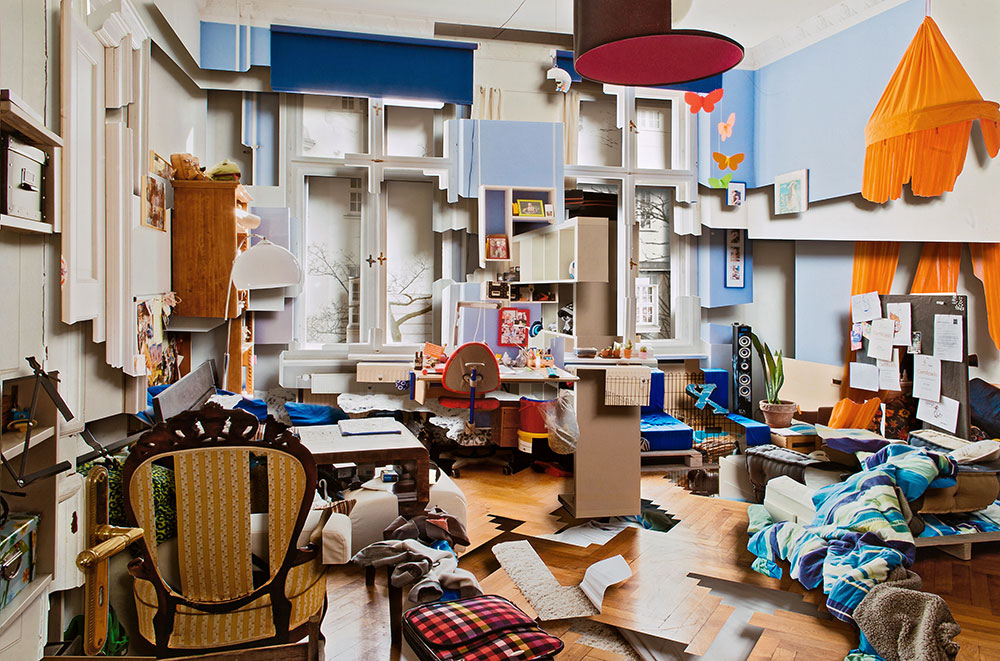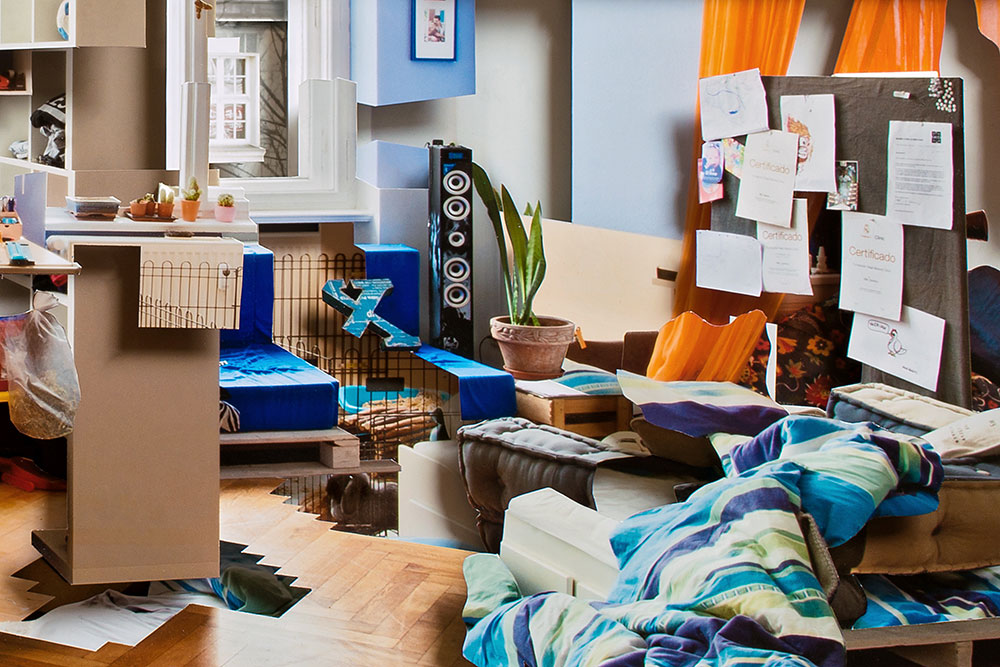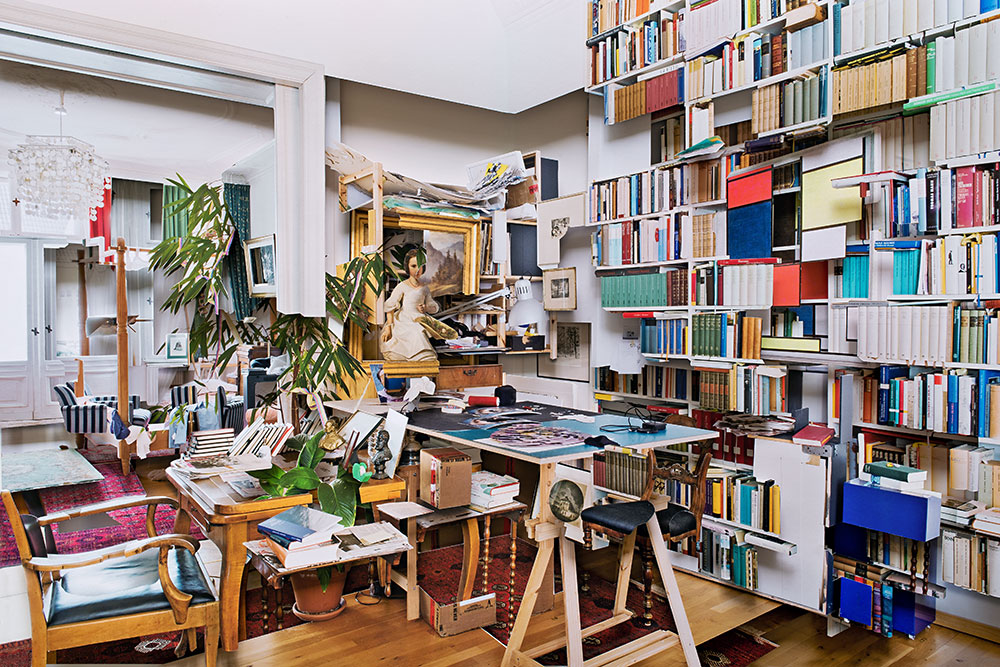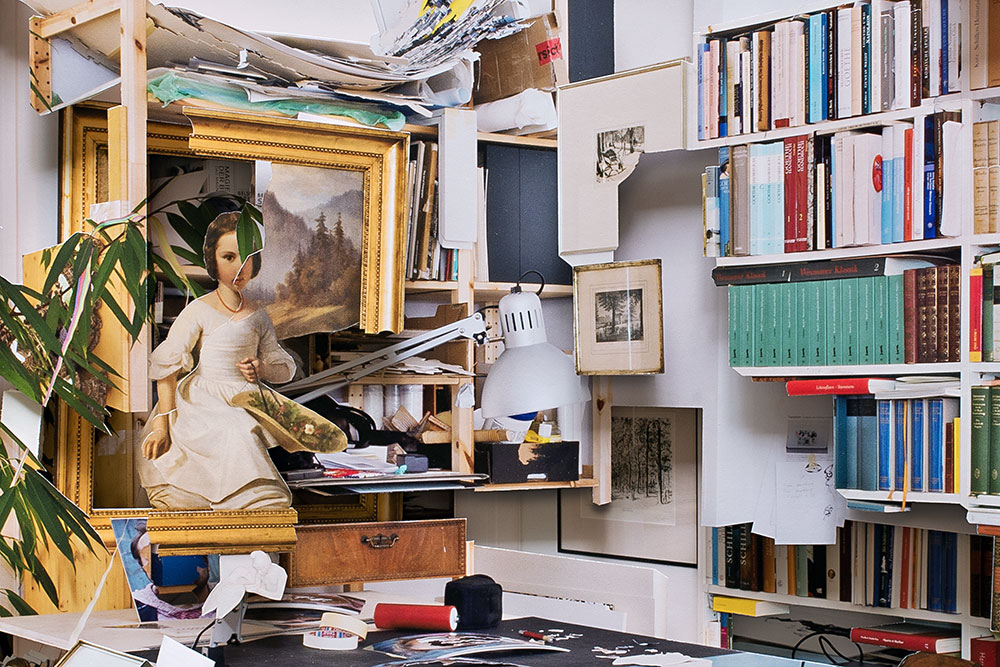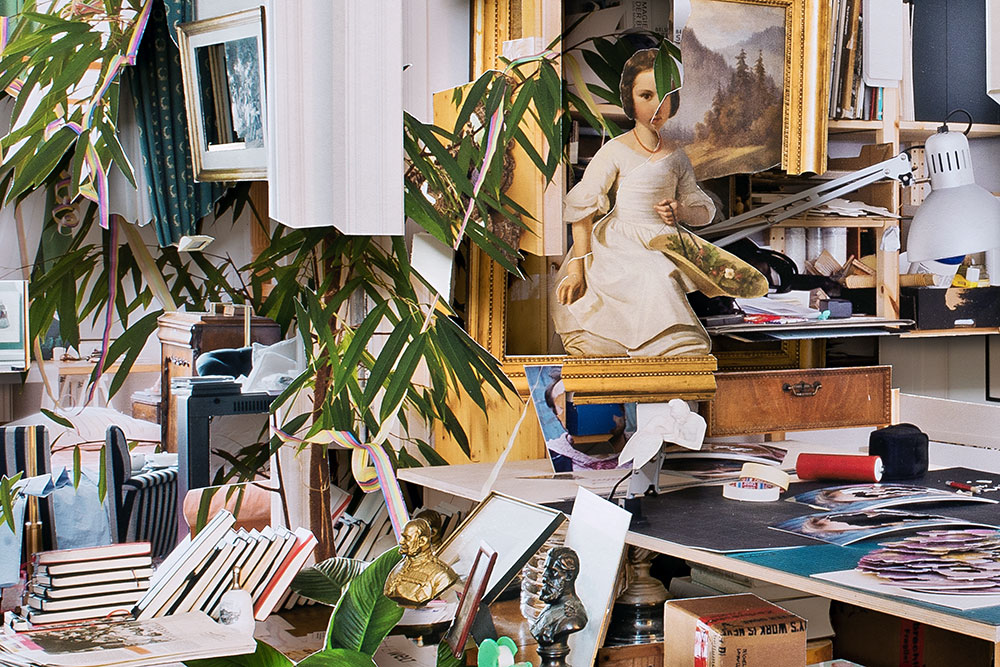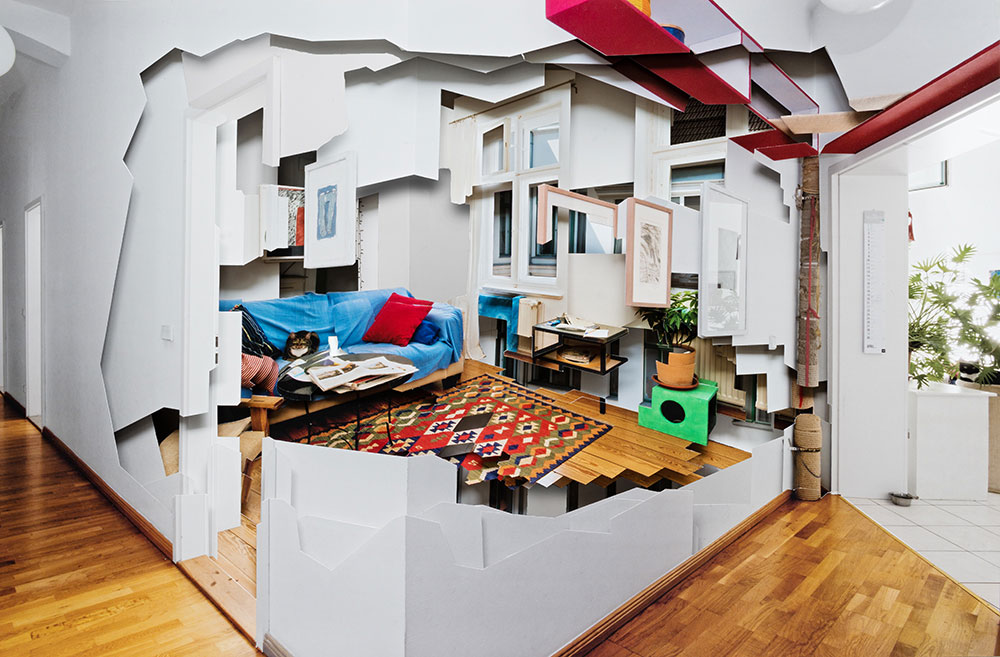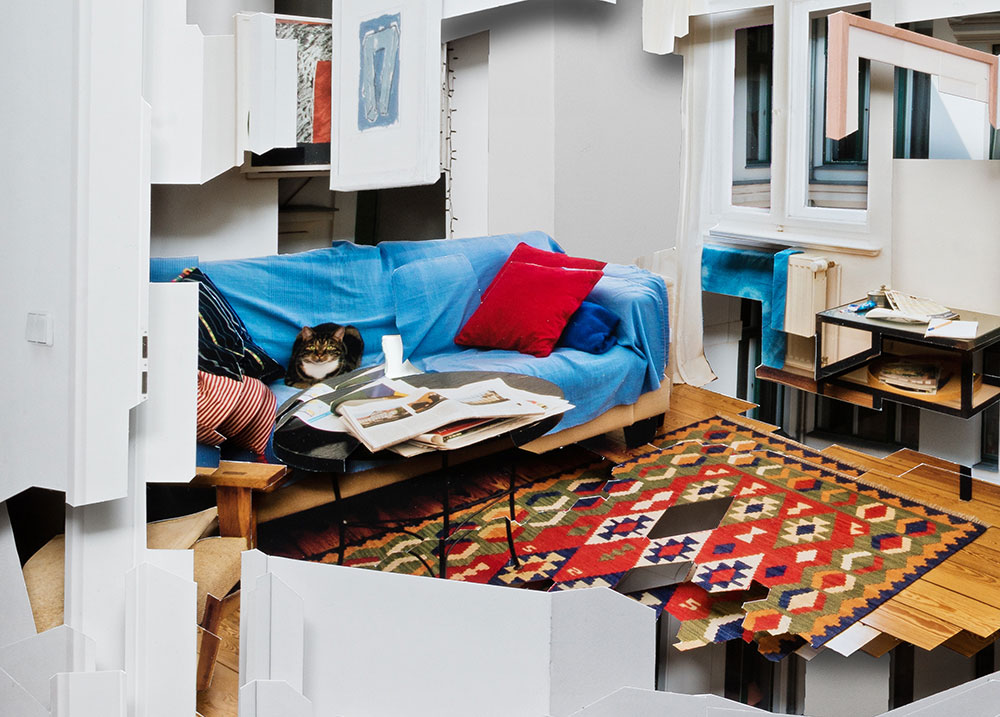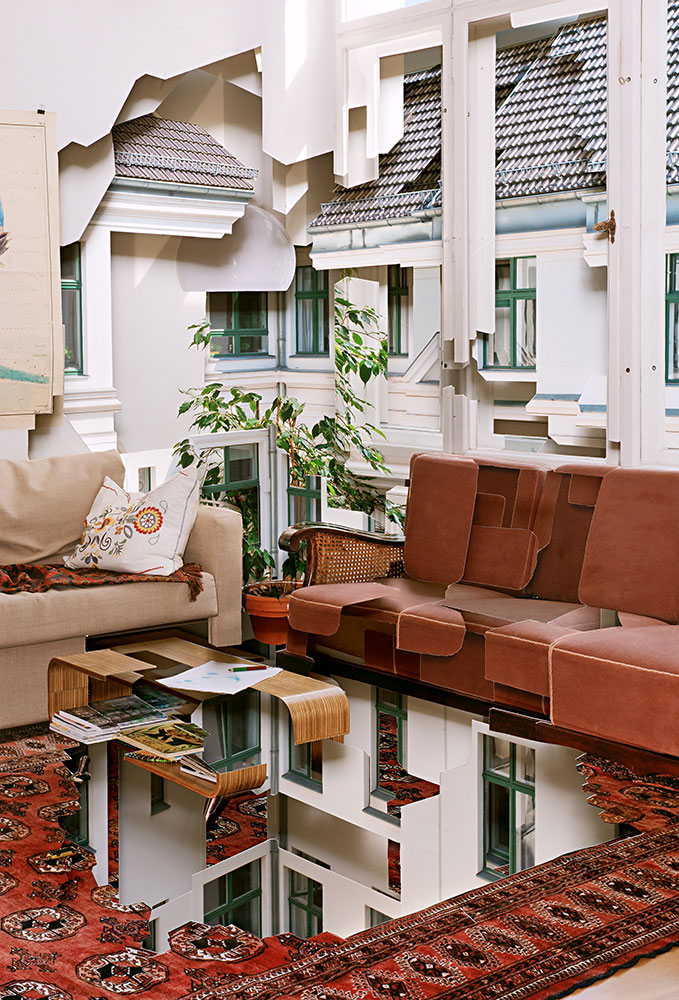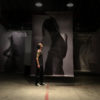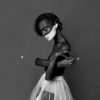– Last time we interviewed you was in early 2015. How are things going? How your art has evolved since then?
On the technical side, the works have become more complex and detailed. On the artistic level, the work has become more focused and more explorative depthwise rather than broadwise, meaning that I develop only one body of work at the time which lets me find more different aspects of one theme.
Also, my way of imagining new works has changed, I have become more aware of questions of composition and color. But unlike a painter or photographer, I arrange my compositions in space and not on a flat surface.
– Can you tell us something about the show you are having right now? What led you to create this new body of work?
“Walls apart” is a show that I have had on my mind for a very long time. In Berlin, I live in a building from 1897 and always enjoyed imagining all those life stories that could have happened here inside those same walls, moments of joy and pain, all those different characters and so on.
The neighbors’ flats are identical in construction, but they look and feel entirely different. Every person expresses his personality in the way he arranges and furnishes his flat. In this series, I let different private spaces clash and thus want to question the concept of individualism.
– So the collages depict the real look of each apartment in your building? Did the way the apartment looked also influenced the way you built in three dimensions each piece?
– The 3D aspect of your work implies that the position from where you see your work modifies the perception of it. Your spot as a viewer defines what you can see. Is this a way to manifest the value of real stuff vs. the digital world? What do you find in the sculptural side of your work?
I think the sculptural side of my work is crucial. It is strongly linked with the concepts of space and illusion of space in an image that is basic to all of my work. I experience many times that some people come into a show – having seen before only a flyer or some images online – and have no idea what they can expect to see. I like that! My pieces are in a way not photographable, about 60 % percent of the experience vanishes when you take a picture of it. The real, haptic world of things and people is still the real deal for me. It is where I want to spend most of my time and also where I want to experience art.
The exhibition´s catalog mentions Walter Benjamin´s “The Work of Art in the Age of Mechanical Reproduction” as a reference to understand better your work. How does your work defy photography as a medium? Are your “photographic sculptures” a way of breaking with this omnipresent mechanical distribution of images?
Does my work defy photography? I don’t think so. It is more an extension of the posibilites of this actually pretty astonishing medium. However it is overused and has definitely an inflationary trend. Benjamin talks about the aura that an artwork looses in its’ mechanical reproduction. I think most photographs are lacking this aura, even though they might be unique. In my work craftsmanship plays an important role, since the sculptures are handmade and you can feel the time spent on its’ creation. I think like that the aura “returns” to photography.
Which is your perception of collage as a media in contemporary art nowadays?
The idea of collage is since its’ invention in the beginning of the 20th century central to modern and contemporary art. Which doens’t mean that someone has to make a collage to use this idea. Collages often have the feeling of freshness and lightness and so they can be used for any sort of context. At the moment I see many artists using collage-like paintings, like Adrian Ghenie for example.
More info on the show
More Michel Lamoller:
